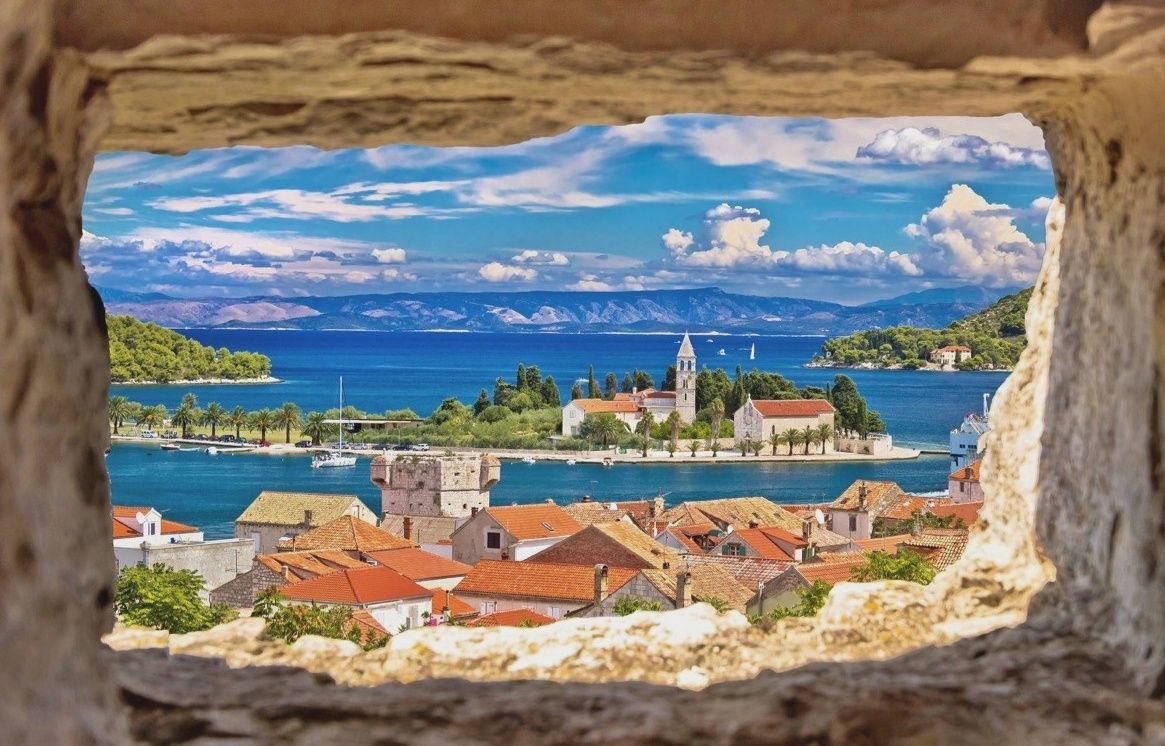
Excellent wine. Brutal history. Most beautiful beaches. Military insfrastructure. Hidden coves and vertical cliffs. Deep and crystal clear sea. All those labels fit in a small island of Vis.


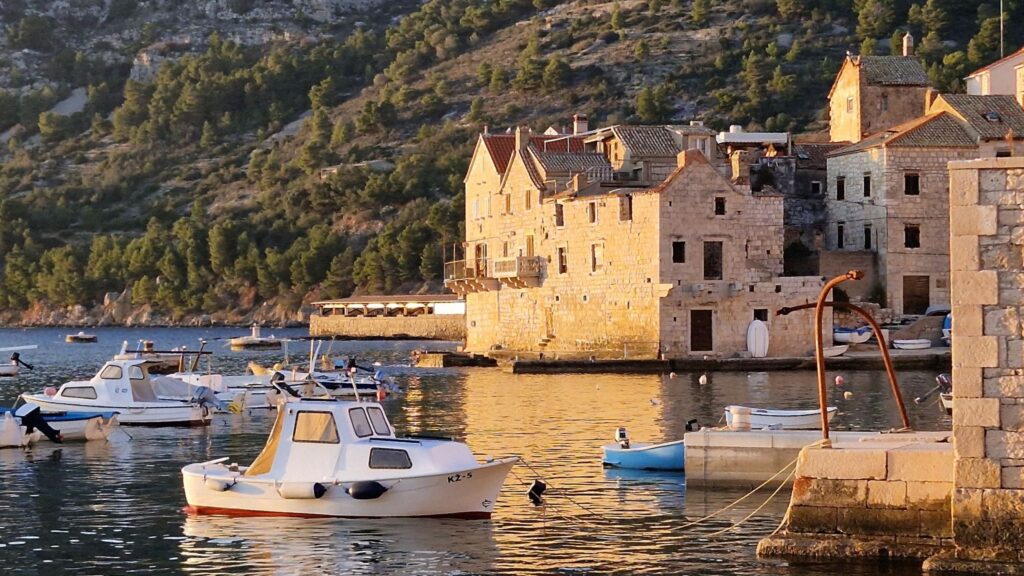
THE INTRIGUING HISTORY
In the second half of the twentieth century Vis was a grey military zone with no tourist bustle or prosperity, cut off from foreign visitors from the 1950s right up until 1989. This isolation preserved the island from development and drove much of the population to move elsewhere in search of work, leaving it underpopulated for many years. As has happened with impoverished islands across the Mediterranean, Vis’ lack of development has become its drawcard as a tourist destination.
Today it is prestige destination where even wealthy foreigners are now purchasing houses. International and local travellers alike now flock to Vis, seeking authenticity, nature, gourmet delights, peace and quiet, while artists come to seek inspiration.


Vis is fascinating. That is a quotation heard many many times.
Of all the inhabitated Croatian islands, Vis is the furthest from the coast and the most enigmatic.
It has undergone through many political changes and authorities through its long history and all of them left their imprints in some way. It had a turbulent history and always played an important role, in any culture and politics. All because of its strategical position in the Adriatic, having a safe and closed harbor in Vis and fresh water springs all over the island.
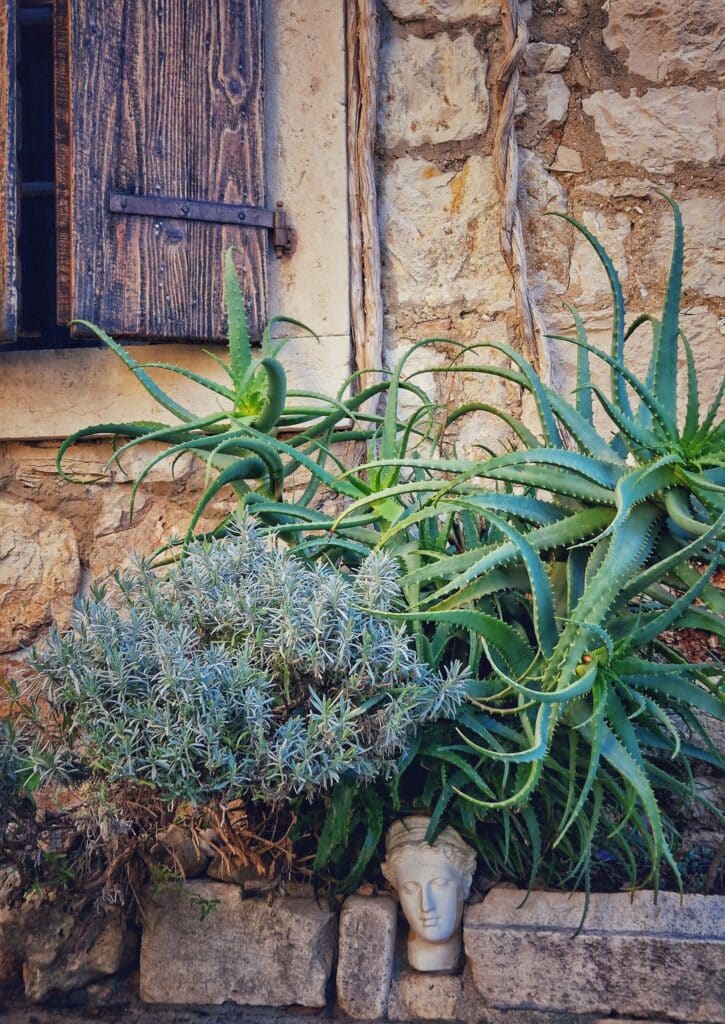
The main story of Vis starts off as far back as 397 BC. In that year, Dionysius the Elder – ruler of Syracuse on Sicily founded the colony Issa (from which the name Vis stems) on the island. Ancient tribes of Illiryians ruled by their queen Teuta held the island. In Greek and Roman times it was an important self-run colonia called Issa. Later through centuries Venetians, Austrians, French, British and the Italians all had battles around the island and a short time of having Vis in their posession. It was set on a famous Diomedes sailing route through the Adriatic and was an obligatory stop for the pilgrims coming from Italy.
In the second half of the 20th century it became a shelter of another kind – it served as a Yugoslav military base. During WW2 Josip Broz Tito, the president of the former socialist country of Yugoslavia was hiding in a cave in the middle of the island for moths, creating the idea of Yugoslavia and all the military infrastruction he would built later. Today those abandoned structures are war monuments luckily never used for the purpose they were built for and most of them can be visited. That is, if you can find them.

NATURAL PHENOMENAS
Stiniva bay – recently the most popular. Two times in the last few years it has been officially proclaimed the most beautiful beach in Europe. And it deserves that title. A former deep cave collapsed by the waves hit, today it is a small but enchanting pebble stone beach almost closed by the cliffs, thus creating a unique amphiteatral form. You can get there only by boat in front and then swimming in between cliffs or by a 10minute hike down from the road. There is a small restaurant right on the beach with a few delicacies on the menu.
Blue cave – it is actually not on Vis but on a smaller island just south of Vis, called Biševo. It’s special for having a hole in cave´s ceiling where the sun pierces and enlightens the sea to give it azure blue color. You can go in only by organized boat tours which was a manner of protecting it from being overrun by visitors.
Green cave – similar to Blue cave, but only set on a different island even smaller than Biševo, called Ravnik.
Kraljičina cave; Budikovac island with its own beach bar on a sandy beach and a calm port; Grandovac, Pritiščina, Srebrna or Milna beaches or a boat ride around the island to get to see more are just some of the recommendations for a perfect getaway.
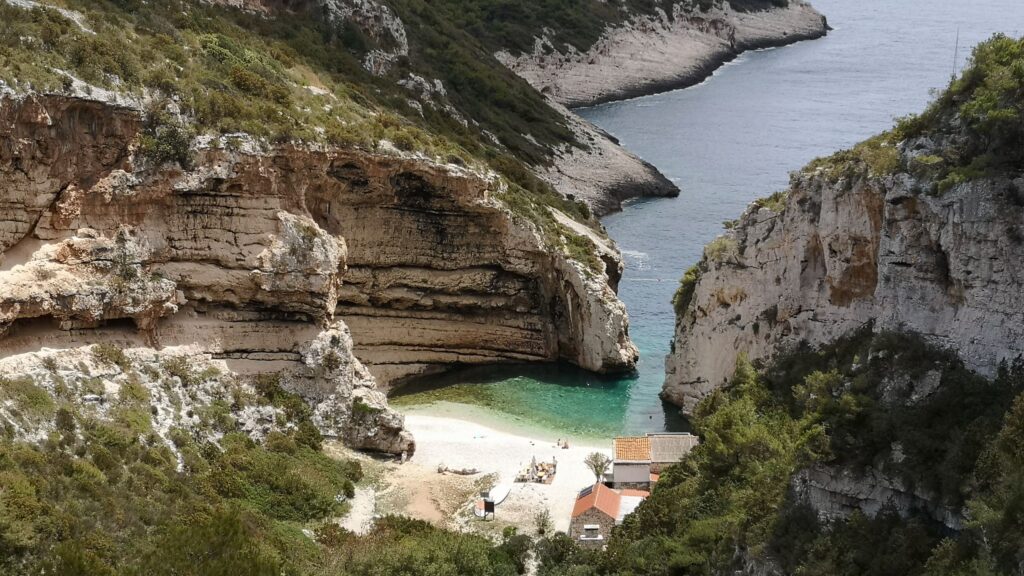

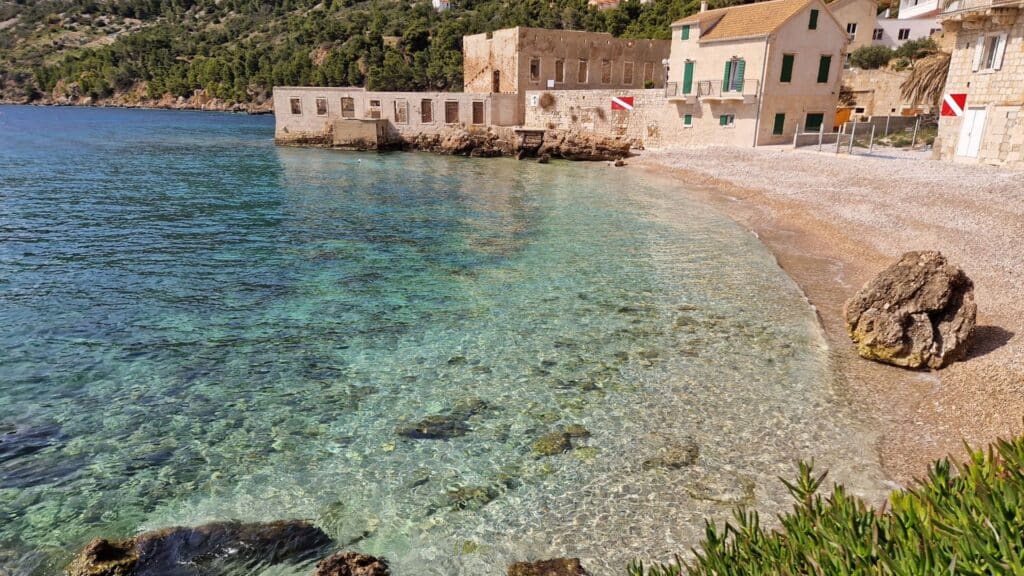
MILITARY HERITAGE
During the WW2 Vis was the center of political and military management of the National liberation war. Tito, the president of later formed socialist union of Yugoslavia spent a few months hiding on Vis, having meetings in a cave with its comitee, which would later lead to forming of Yugoslavia. It also brought to Tito’s mind to start building military infrastructure all over Yugoslavia to protect it from the possible usurpers. Today Tito’s cave is open and free to visit, with a nice climb of some 200 steps to get to it.
A lot more interesting are all the tunnels dug on all the sides of the island to protect the approach to the coast. Stupišće and Barjoška capes surround a small pictoresque fishermen town Komiža and are positions where the only remaining canons can be seen in their stations. Vela Glava communication center wasn’t even discovered a few years after Yugoslavian army abandoned the island in 1993. In Parja bay you can enter the submarine and ship tunnel, or walk the tunnels where there used to be canon stations facing the coast. Grandovac beach in Vis is hiding a former artillery shelter rare people manage to find as it is all grown in bushes. And those are just some of the tunnels with the easiest access.
But for better knowledge and understanding of everything it is the best to visit the sites with guided tours in 4×4 vehicles or on enduro motorcycles, as you are probably going to miss to see the best in those dark puzzled tunnels or not to mention – get lost or clastrophobic and start panicking. Trust us, we’ve been there. Literary.
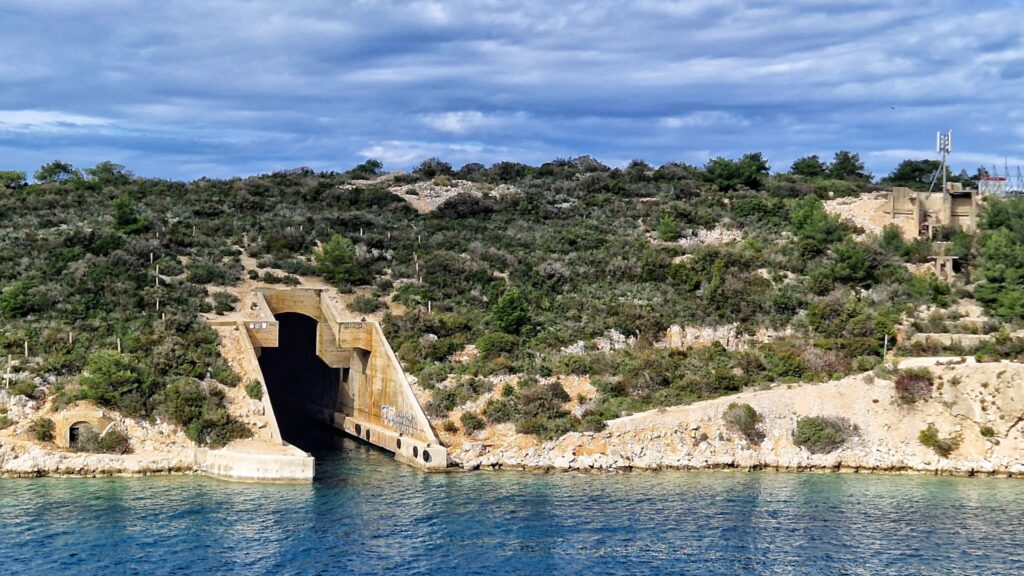
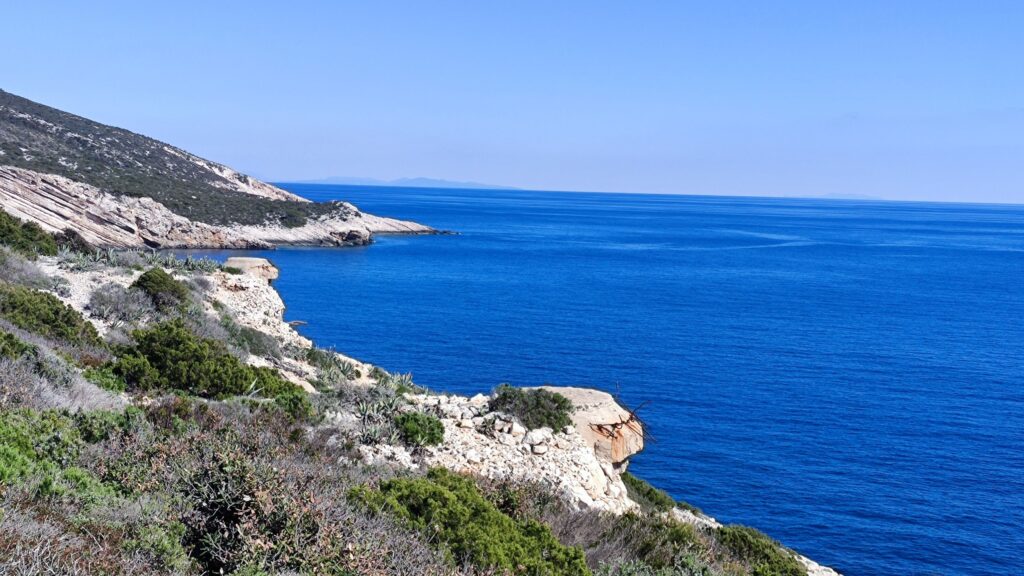

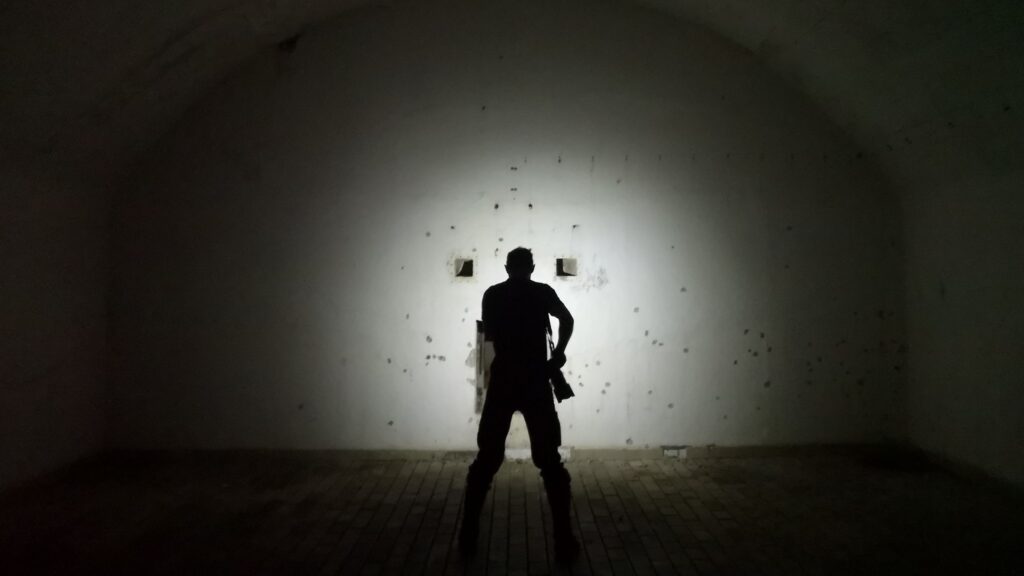
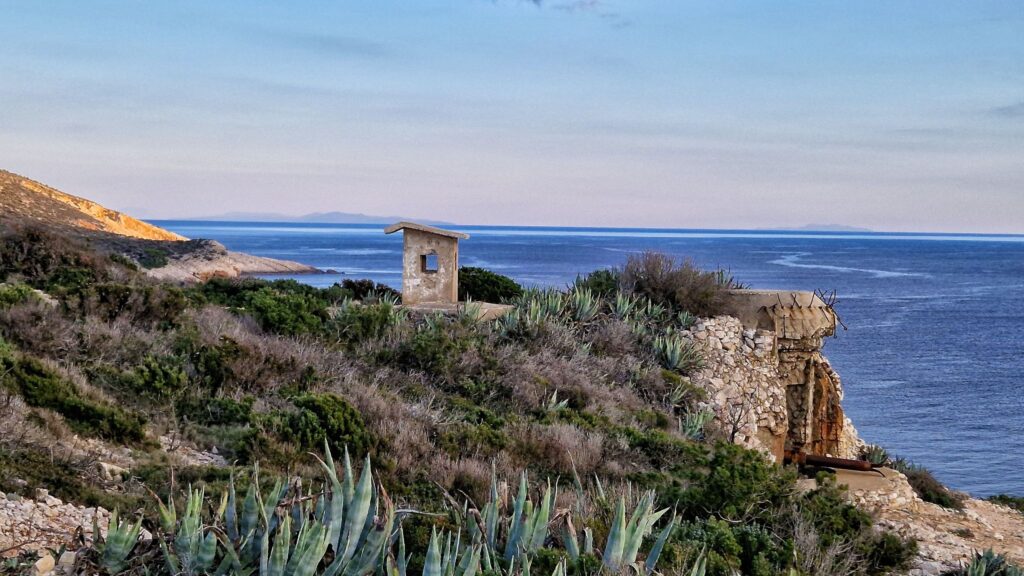

ACTIVITIES
Many battles around the island through centuries left a lot of sunken boats in the waters around. Guided diving tours take you around those shipwrecks or you can just dive around to see the colorful underwater aqutorium of the island.
Rent a boat or a guided boat tour to take you around the island. It is the only way to see the impressive cliffs or hidden beaches veiled in deep bays. Vis is also a popular yacht destrination and has its own regatta in October, as a last remnant of summer and its spirit.
Guided tours in 4×4 vehicles are very popular as they take you around most of the military heritage and some of them include local delicacies and wine tasting at the end. Perfect for enclosuring the story of Vis.
Guided motorcycle tours are also becoming a thing as it is a new way to get to see around through a more amusing and fun activity, also to soak up the scents of the seasalt and herbs. Ride around the island to visit all the natural phenomena and military heritage mentioned above. Or simply allow yourself the freedom to move around the island on two wheels have a coffee in one place, a swim in the other, a look at the sunset from the top the island Hum hill or to visit its numerous forts, wineyards and beach bars.
You can check out our 2 day motorcycle riding tour on the island Vis.
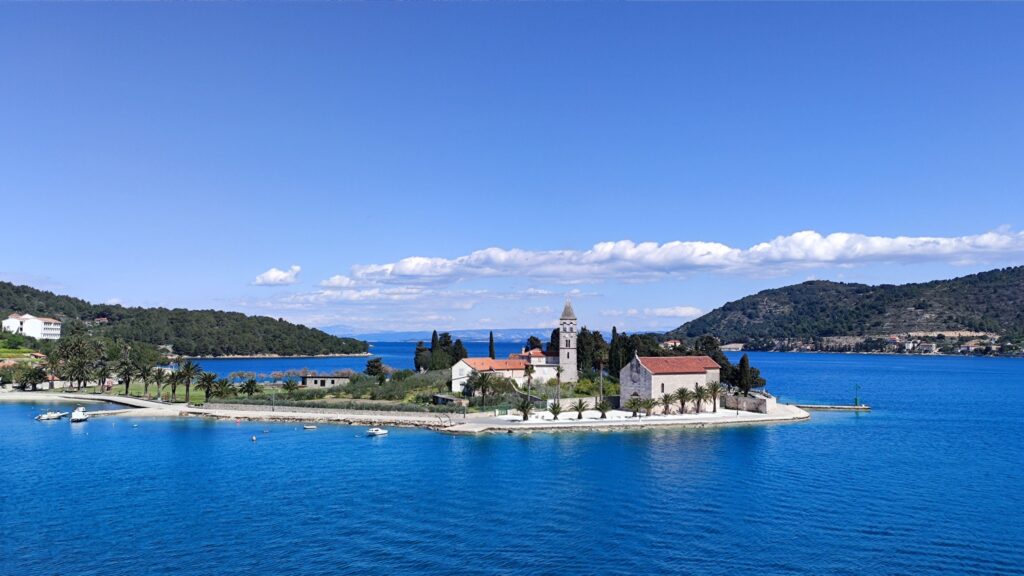
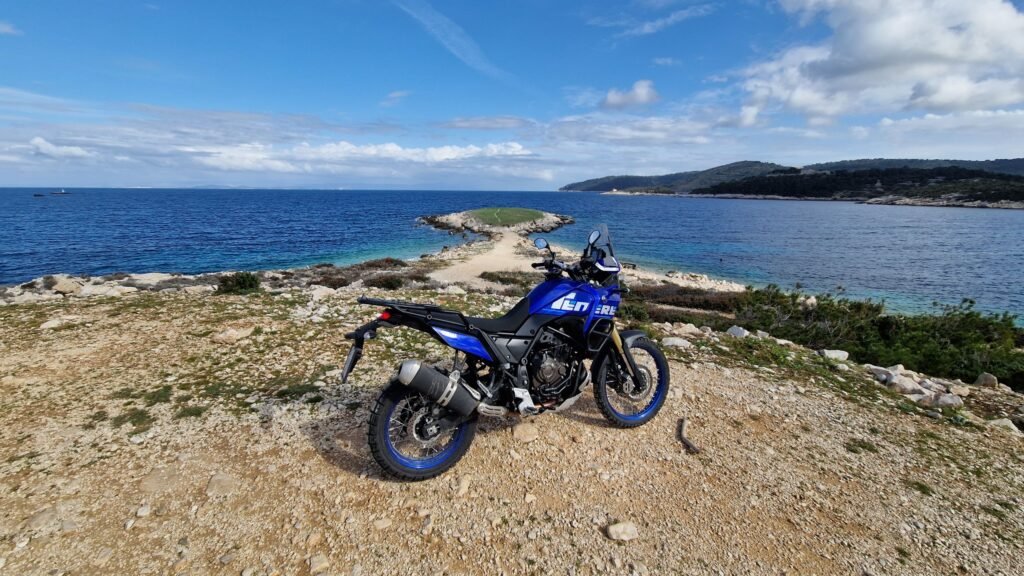
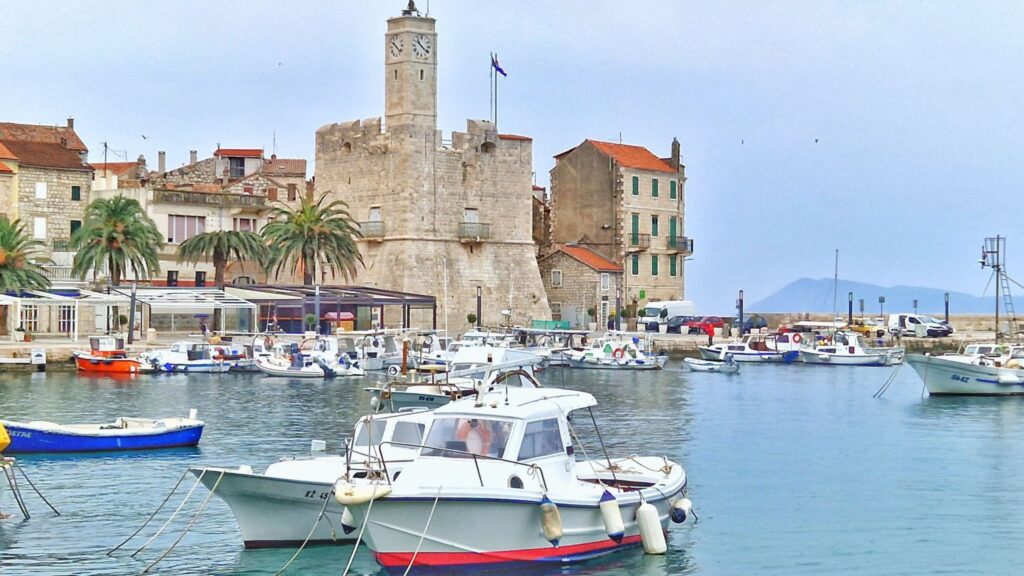
Or you can just simply stroll around the long bay of Vis town, have a gelato and notice the house decorations as stylized souvenirs of time. Walk the narrow streets of Komiža, listen to the local dialect and watch men sewing their fishing nets on the promenade. Later maybe to go to a party on Kamenice beach.
Wine tastings and local gastronomy is something you cannot miss visiting the island! Sit in the pine trees shade with a glass of Plavac mali or Vugava while listening only to birds. Eat the fresh fish and inhale the memories through the scents of the sea and dalmatian spices.
And have we mentioned Mamma Mia 2 was filmed across the whole island? Well, with all the mentioned above this is the least of the highlights but it makes sense that the production decided to film on Vis island.
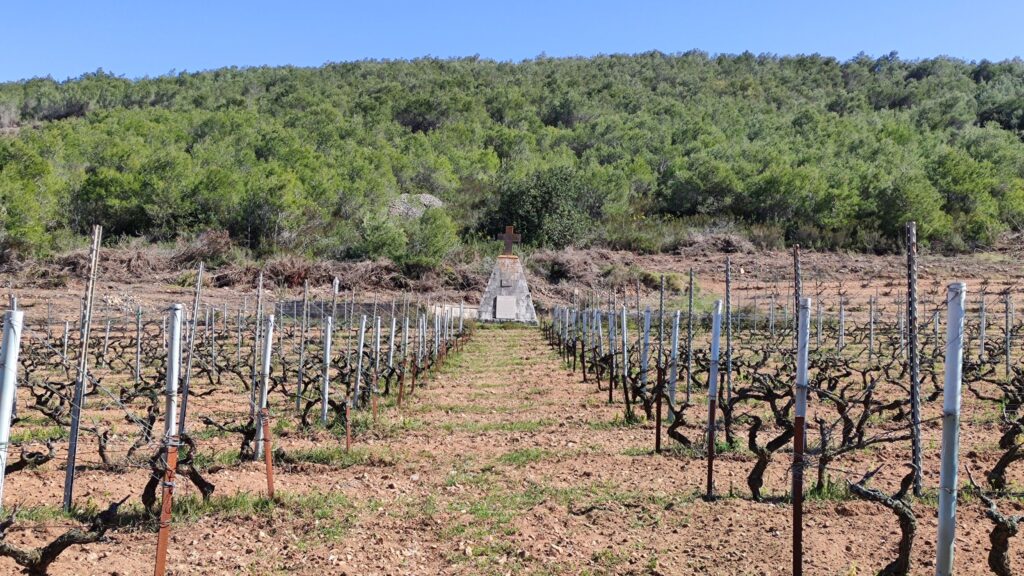
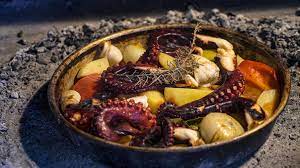
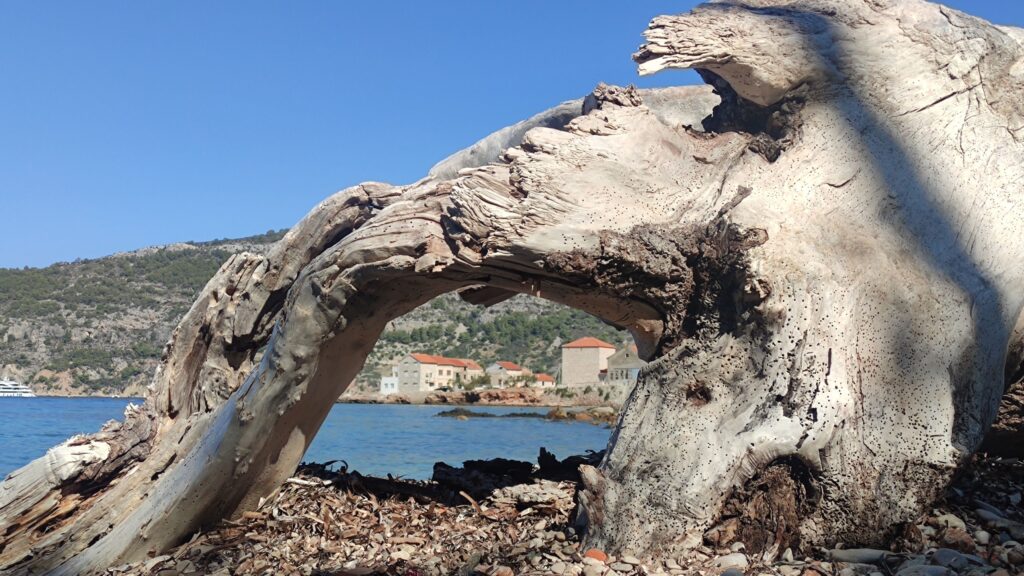
Leave a Reply